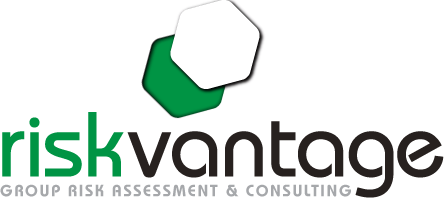For Trusts and Consortiums
A Trust or Consortium(entity) is a collection of employers in similar industries that come together in part to combine their insurance pool into a single offering where some part of the risk is shared across a larger entity. As a larger entity greater leverage can be gained with insurance carriers resulting in lower administrative fees. Often, the entity will share some of the risk of high cost claimants amongst themselves allowing them to purchase less protection for outliers from the carrier.
The RiskVantage Algorithm can be a key component of managing a trust or consortium pool. The entities in any given market compete with vast array of other insurance options that potential participants can chose. For an entity that wishes to grow to enhance their scale advantage they need to be highly selective in choosing which prospective entrants can join.
The entities that successfully manage the selection of their risk pool can keep premium low and attract additional participants.
Some entities make attempts to be selective in choosing new entrants. However, they use antiquated methods such as a cursory review of industry, demographics and past year claims experience when available. Unfortunately, these approaches may provide a false sense of security as ultimately this data collectively provides a poor indicator of what to expect for future claim costs.
RiskVantage will allow the entity to manage their risk profile in a systematic way to develop the best possible risk pool leading to favorable premium rates. The algorithm can be utilized to evaluate potential new entrants to select only those that have a favorable risk profile.
For existing entities, the management of the relative pricing of their current participants needs to be considered. The one rate fits all approach often leads to issues. Not all risk profiles are alike and those with the best risk profiles might find they are better off going it alone. Their own risk profile might afford them lower premiums as a standalone group that more than offset the loss of scale by not being part of the larger entity. A tiered rating approach often is the best approach to address this issue.
The RiskVantage Algorithm can be utilized to establish methodologies to successfully stratify pricing within an entity. This stratification needs to be based on a fact driven process that provides a stable, sustainable result over time. Simply basing stratification on past year claims history will lead to instability and dissatisfaction.
Let’s think about this from the employer perspective. As an employer why am I being bumped to higher tier one year and then back down the next, or vice versa? My group profile hasn’t changed over that time so why am I getting bounced around. The existence of one or two high dollar claimants isn’t an acceptable explanation. These cases aren’t likely to repeat next year or some of these individuals may no longer be enrolled on the plan. How do I explain these changes to my superiors when I can’t justify the change myself. Maybe I’m better off leaving the Trust or Consortium. At least I can explain what’s going on if I’m on my own.
RiskVantage can solve this problem allowing the Trust or Consortium to survive long term. The algorithm can stratify groups in a stable manner. The tier for any participant is not likely to change from year to year unless there has been a significant change within the participant.
RiskVantage is available to contract with a Trust or Consortium to utilize the RiskVantage algorithm on a project basis
to review the current state of the entity or to evaluate a potential new prospects for entry. RiskVantage also is willing to develop an exclusive arrangement with a Trust or Consortium in a given geographic area.



